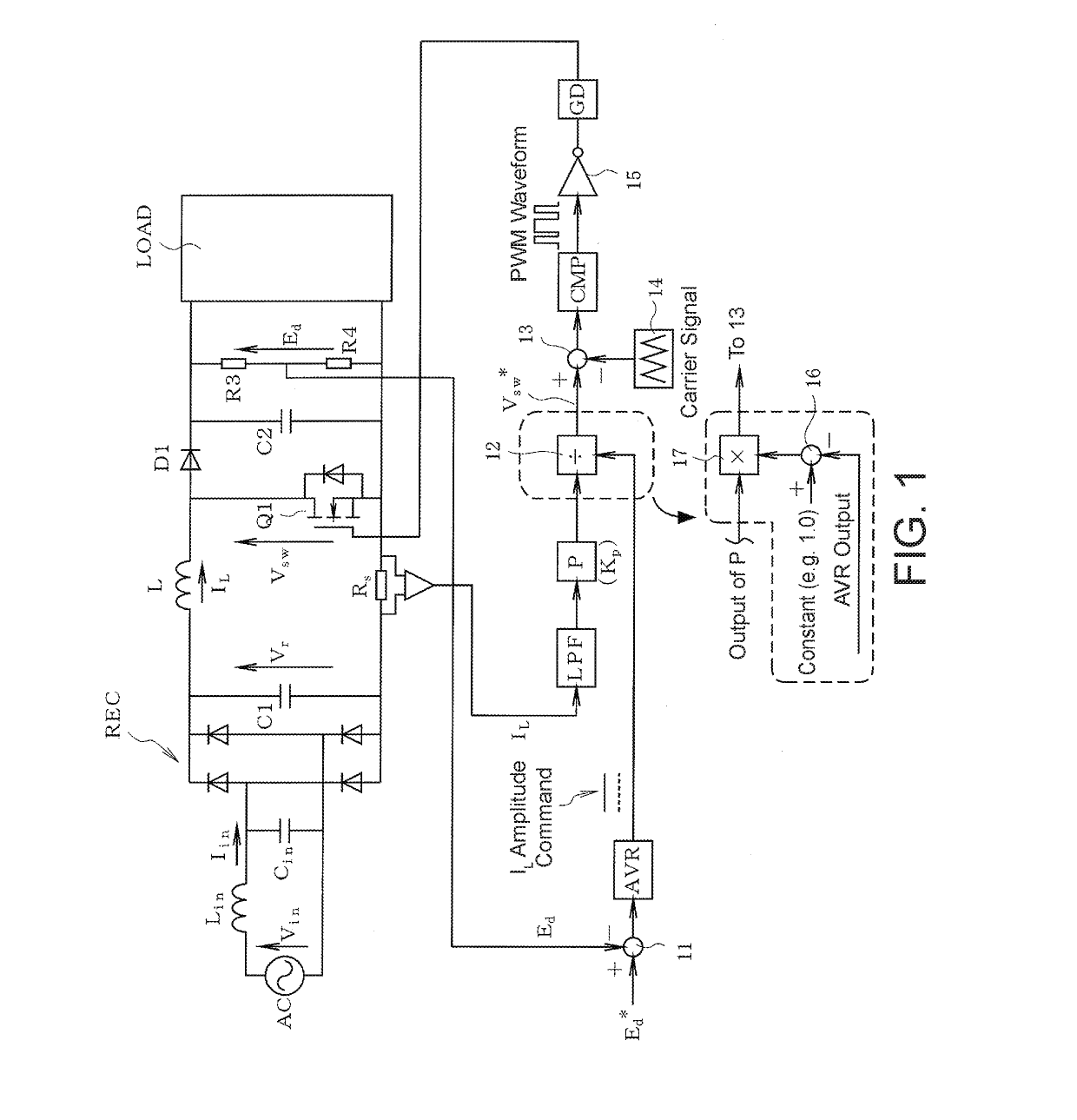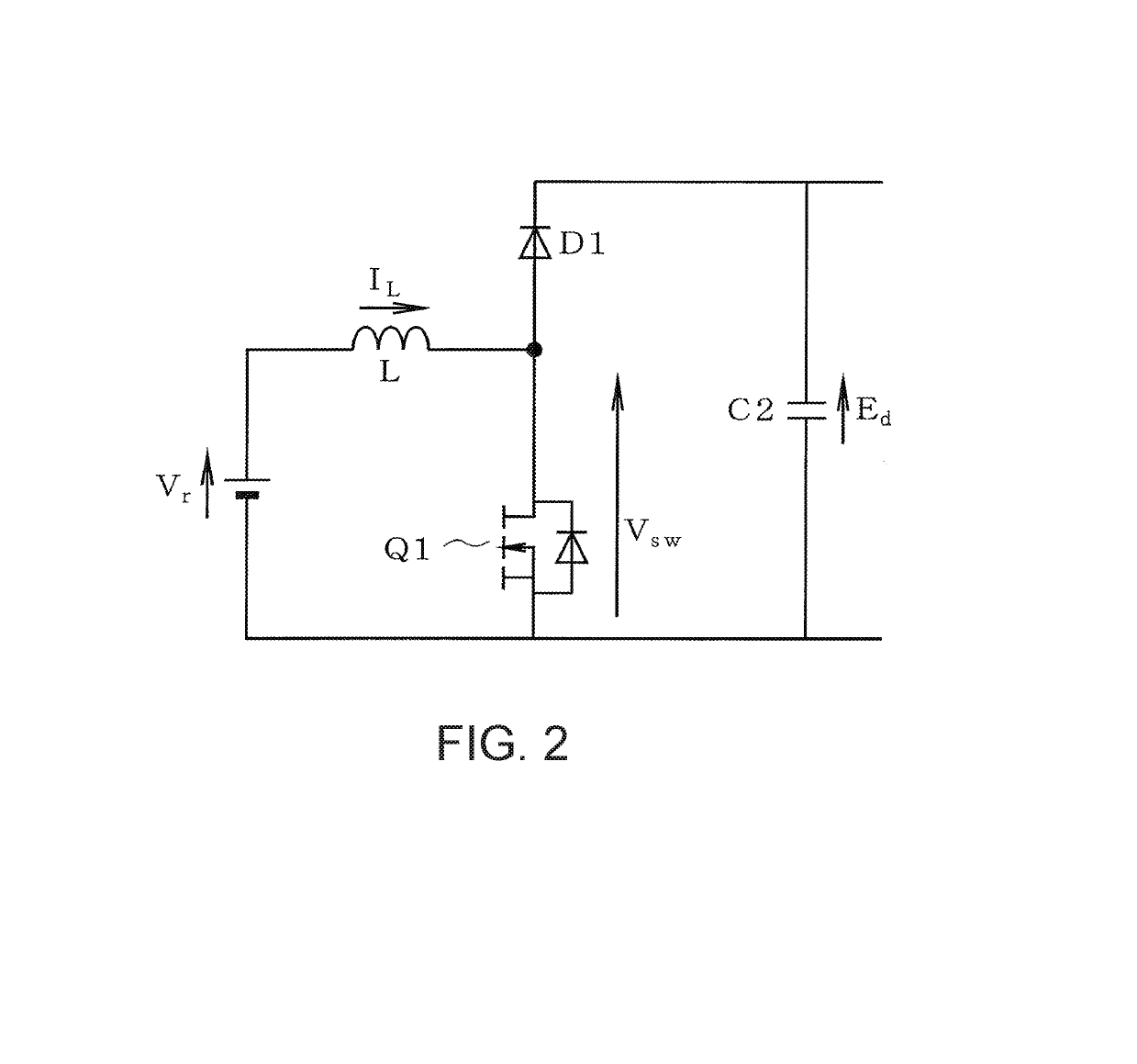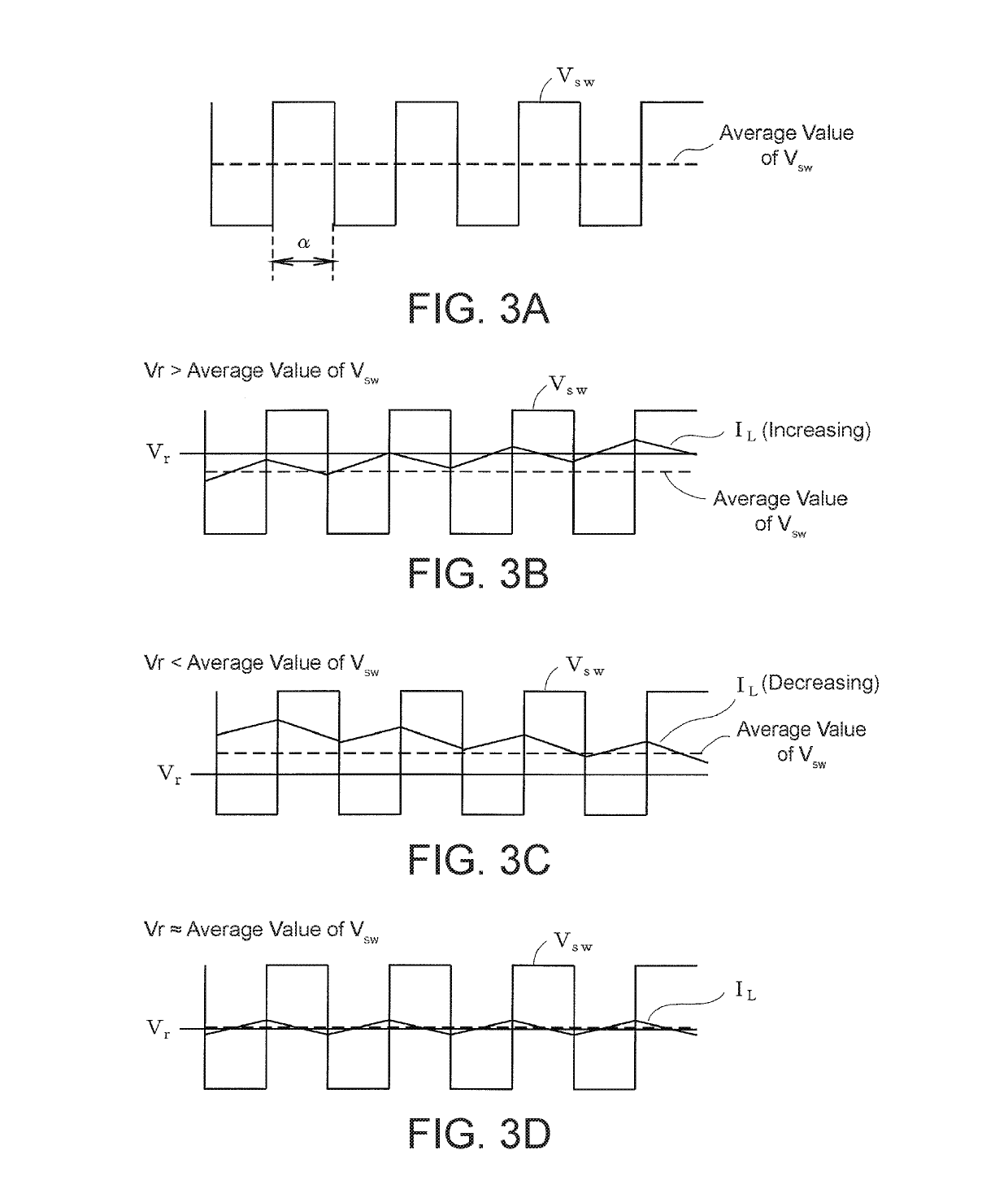Ac-dc converter
a converter and current waveform technology, applied in the direction of electric variable regulation, process and machine control, instruments, etc., can solve the problems of increasing the distortion of current waveform, and achieve the effects of improving efficiency, reducing resistive loss, and improving power factor
- Summary
- Abstract
- Description
- Claims
- Application Information
AI Technical Summary
Benefits of technology
Problems solved by technology
Method used
Image
Examples
Embodiment Construction
[0046]An embodiment of the present invention will be described with reference to figures.
[0047]FIG. 1 is a block diagram of a PFC circuit for use as an AC-DC converter according to the embodiment of the present invention. The configuration of a main circuit in FIG. 1 is the same as in FIG. 8 except in that the voltage-dividing resistors R1 and R2 are removed. In other words, in the main circuit in FIG. 1, both terminals of an AC power supply (a commercial power supply) AC are connected, via an input filter constituted by a reactor Lin and a capacitor Cin, to a diode rectifier circuit REC.
[0048]A capacitor C1 is connected between the positive and negative output terminals of the diode rectifier circuit REC, and a reactor L and a semiconductor switching device Q1 such as a MOSFET are connected in series to the both terminals of the capacitor C1. Moreover, a diode D1 and a capacitor C2 are connected in series to the both terminals of the semiconductor switching device Q1. A series circ...
PUM
 Login to View More
Login to View More Abstract
Description
Claims
Application Information
 Login to View More
Login to View More - R&D
- Intellectual Property
- Life Sciences
- Materials
- Tech Scout
- Unparalleled Data Quality
- Higher Quality Content
- 60% Fewer Hallucinations
Browse by: Latest US Patents, China's latest patents, Technical Efficacy Thesaurus, Application Domain, Technology Topic, Popular Technical Reports.
© 2025 PatSnap. All rights reserved.Legal|Privacy policy|Modern Slavery Act Transparency Statement|Sitemap|About US| Contact US: help@patsnap.com



